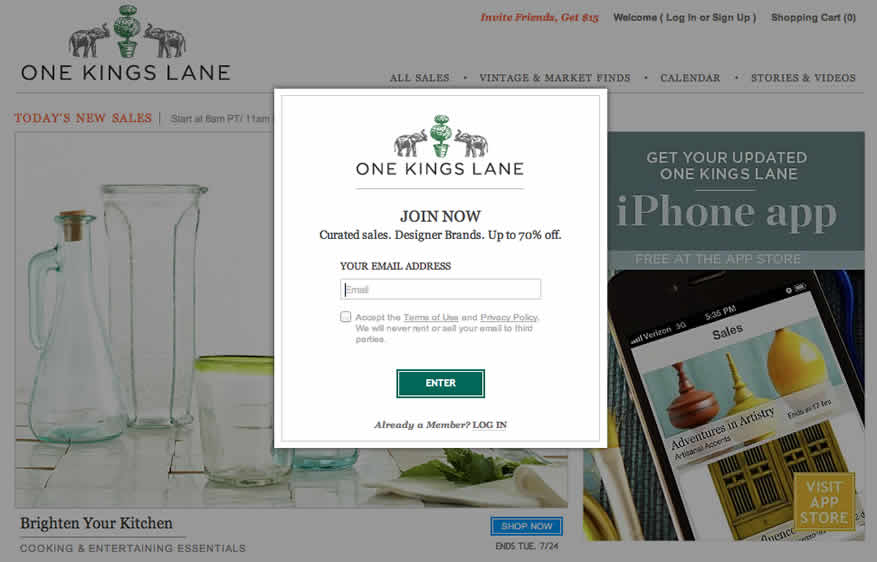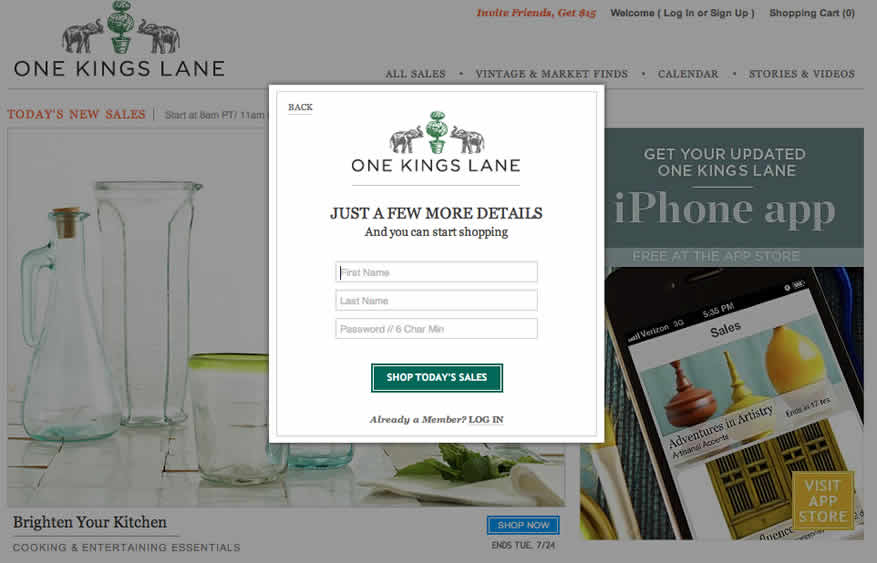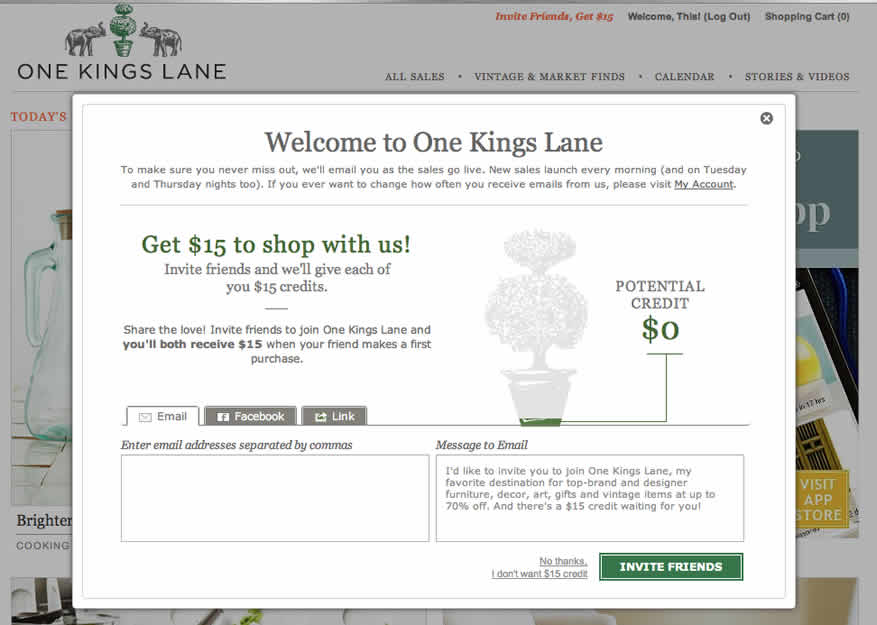You’d think that companies launching business websites would apply the same basic concepts of customer service as any brick and mortar outfit, right? Well, think again. Every day, countless seemingly-smart companies mindlessly toss common sense ‒ not to mention “Business 101” principles – right out the virtual window. Whether you’re online to run a company, provide charitable services or just ask people to upload pictures of their kitties…why are you making it so stinking difficult for people to actually participate on your website?
STEP 1: Assume everyone knows who you are (and make them prove they should be allowed in).
“How?” you ask? Put a velvet rope around your business and require prospective customers to hand over something of value before they make it through the door. If you’re really serious, barricade the entrance so only those who’ve coughed up the goods are deemed “enter-worthy.”

So what does that look (and act) like for an e-commerce store on the web? Launch a popup window that locks everybody out ‒ until they divulge their email address. Don’t worry that your business isn’t known by everyone or that you’ve given your prospective customers ZERO reasons to trust your “exclusive club” yet.
In my example (above), we have a homepage with popup that can’t be closed without the user entering her junk or temporary email address (the online equivalent of the old “sure-I’m-interested-now-please-go-away” fake phone number). You end up with meaningless junk in your pockets (database) and zero-point-zero-zero potential for anything worthwhile later. Step one…strike one.
STEP 2: Stalk your prospects through the door (and beyond).
While you’re at it, insist they slap on a nametag and become a member before they can proceed.

Now, keep showing your prospect who’s in charge ‒ and up the “just plain creepy” factor ‒ with a mandatory registration process. Don’t let her go another step inside until she reveals even more info. Trust? Sure, that comes up a lot on the interwebs, but you have information to collect! So gather first, apologize later (if at all). Step two…strike two.
STEP 3: WTG! You’ve collected some data…don’t stop now!
While you have your prospect dazed and confused, see if you can shake loose some contacts from her address book. (Move quickly and pickpocket as many referrals as fast as you can.) If you must, bribe her with a few promissory bucks but whatever you do ‒ keep the pressure on before she knows what hit her.
Here’s how that scenario plays out:

It’s reality check time. If you followed my really bad advice, you’ve just shoved two enormously annoying barriers in your prospect’s face before they’ve spent one thin dime in your virtual store. Is this really the best time to ask for recommendations from a person who has no history with you? C’mon man. It’s way more effective to wow folks with remarkable service and then ask ’em to share that instead.
Are your priorities in order?
First, figure out what your website’s priorities are. Is it to put hoops and barriers before sales? Is it to be the pushy car salesman that won’t let a lady out of the Prius she drove onto the lot with? Of course it isn’t. But this is how it’s done. A lot. And it’s the polar opposite of permission-based marketing ‒ where trust is earned and relationships grow over time rather than expected (and demanded!) immediately.
If you’re still not convinced, consider this five-minute blind date scenario:
1. Ask your lovely date for her phone number before any introduction, ordering of coffee or chit-chat. Block the exit and keep pushing for that phone number.
2. Then, ask for her thorough medical history, hygiene habits and thumbprint.
3. Finally, suggest she put in a good word about you to all her available friends.
4. Steeeeerike three! And you’re out. Game over. Head to the showers.






